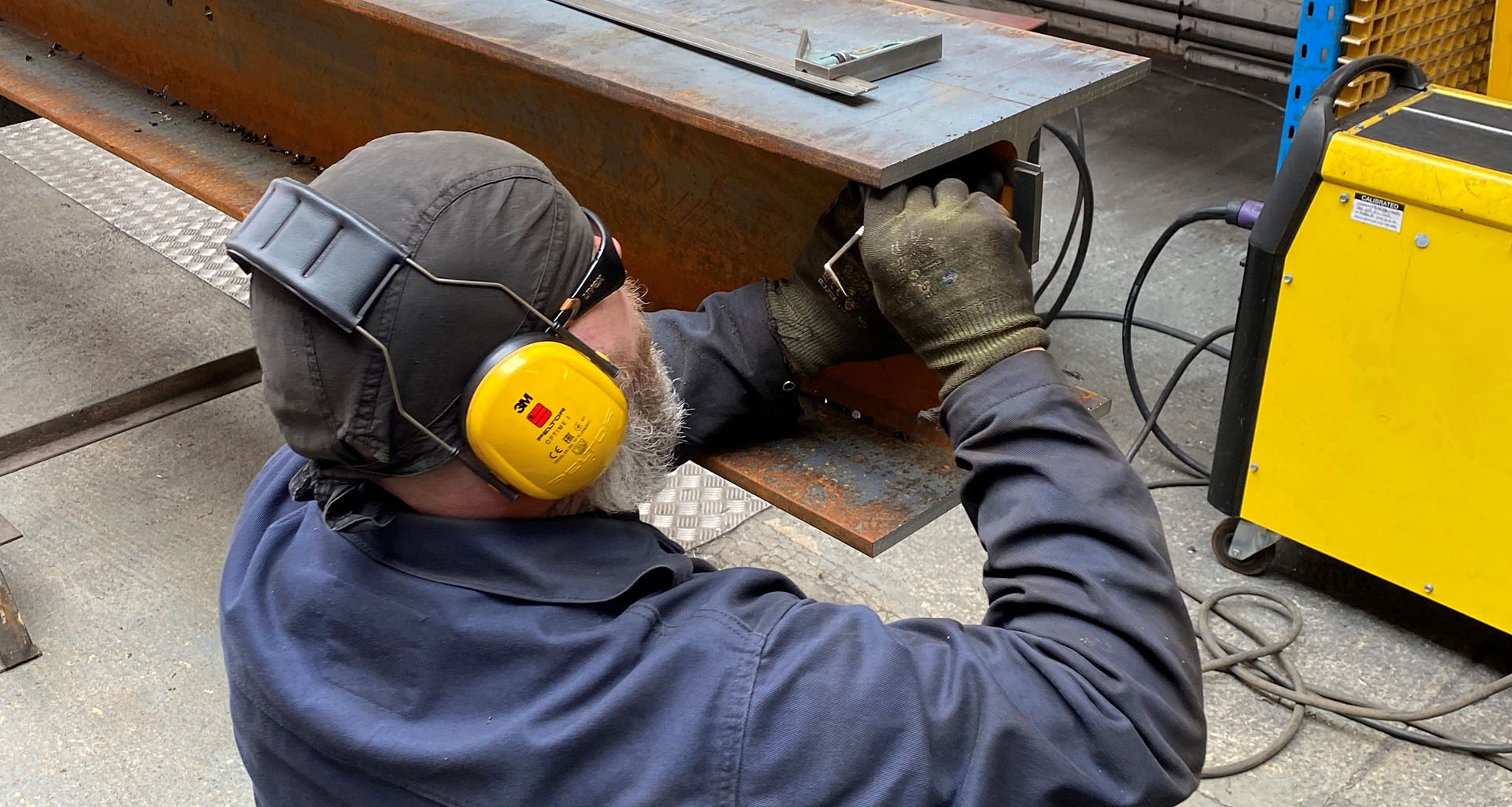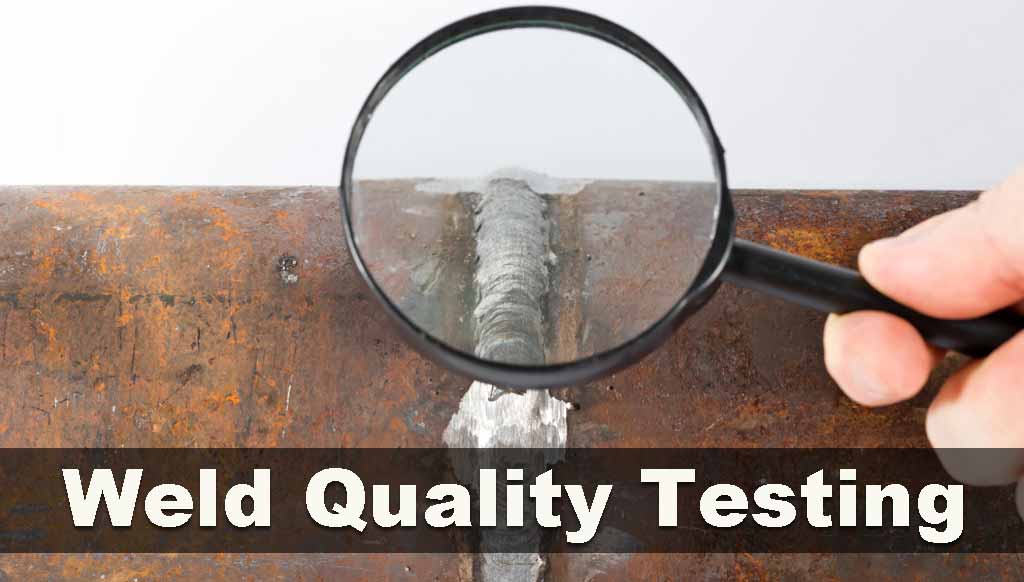Recognizing the Principles of Welding Inspection to Make Sure High Quality and Safety And Security
In the world of modern design, welding evaluation stands as a keystone for guaranteeing both the high quality and security of architectural productions. The procedure entails a meticulous evaluation of bonded joints, using innovative methods such as ultrasonic and radiographic testing to detect hidden blemishes. The experience of qualified assessors is crucial, as they bridge the void between academic requirements and sensible application. Their duty expands past plain detection, encompassing the documentation and interaction of findings to appropriate stakeholders. What are the nuances of these inspection techniques that make them crucial for preserving structural honesty?

Significance of Welding Evaluation
In the world of industrial fabrication, the importance of welding assessment can not be overstated. Welding assessment plays a critical function in making certain the integrity, safety and security, and longevity of bonded frameworks. Given the diverse applications of welding in markets such as building, automotive, aerospace, and shipbuilding, the requirement for stringent quality control actions is extremely important. Proper evaluation ensures that welds fulfill defined codes and standards, which is essential for preventing structural failures that could bring about tragic consequences.
The procedure of welding inherently includes complicated variables, consisting of temperature level, material buildings, and environmental problems, every one of which can affect the quality of the weld. A complete evaluation determines issues such as cracks, porosity, and insufficient combination, which can compromise the toughness and reliability of the weld. By detecting these concerns early, rehabilitative activities can be taken, thereby lowering the danger of failing and connected expenses.
Additionally, welding evaluation adds to regulatory compliance, as several sectors are regulated by strict safety and security standards and standards. Failure to stick to these guidelines can result in legal liabilities and financial penalties. Inevitably, welding evaluation not only safeguards physical frameworks but likewise maintains and shields human lives industry reputations.

Secret Welding Examination Techniques
Although welding assessment is critical to making sure the top quality and safety and security of bonded structures, it is the certain techniques used that identify the performance of the inspection process. Secret welding evaluation approaches can be broadly classified right into non-destructive screening (NDT) and destructive testing. Non-destructive screening techniques such as visual examination, ultrasonic screening, radiographic testing, magnetic particle testing, and fluid penetrant screening are largely used to evaluate the residential properties of a weld without triggering damage. Aesthetic evaluation is usually the primary step, involving a comprehensive evaluation of the weld's surface area for flaws like cracks or porosity.
Radiographic and ultrasonic testing are more innovative strategies that permit assessors to examine the internal honesty of the weld. Ultrasonic testing utilizes high-frequency acoustic waves to detect discontinuities, while radiographic testing employs X-rays or gamma rays to create a picture of the weld's interior. Magnetic particle testing and liquid penetrant screening are surface assessment techniques used to locate surface and near-surface problems. On the other hand, damaging screening methods involve physically breaking or cutting the weld to assess its mechanical residential or commercial properties. These detailed examination methods ensure that welds meet sector standards and safety requirements, thus guaranteeing structural honesty and performance.
Function of Certified Examiners
Certified inspectors play a critical duty in the welding inspection procedure, ensuring that all welds abide with stringent sector requirements and safety and security policies. Their knowledge is essential in identifying issues or abnormalities that might compromise the structural honesty of a weld. By carefully checking out each weld, accredited examiners aid prevent possible failings that can lead to dangerous accidents or pricey fixings.
To end up being certified, inspectors have to undertake strenuous training and testing, which familiarizes them with different welding strategies, products, and testing methods. This comprehensive expertise enables them to assess weld high quality successfully and make educated judgments about their safety and security and integrity. Furthermore, certified assessors are proficient in interpreting plans and specifications, making sure that the welding job straightens with the task's style requirements.
An essential component of their function is to record their searchings for thoroughly, offering a detailed record of the inspection process. Their contribution is indispensable in preserving high degrees of quality and safety and security in welding operations.

Devices Used in Welding Examination
Welding inspectors rely upon a variety of specialized tools to perform their duties properly, making certain each weld fulfills the required standards. Amongst these devices, visual inspection help like amplifying glasses and mirrors are fundamental, permitting examiners to carefully examine welds for surface area problems such as cracks, porosity, and undercut. Calipers and fillet weld determines are necessary for measuring weld measurements to confirm compliance with style specifications.
Advanced devices prolong past visual help, including non-destructive testing (NDT) devices. Ultrasonic testing gadgets are pivotal in identifying subsurface problems, utilizing audio waves to reveal interior suspensions without endangering the weld's stability. In a similar way, radiographic testing uses X-rays or gamma rays to capture photos check here of a weld's interior, highlighting prospective issues.
Magnetic particle testing is an additional crucial device, specifically for discovering surface area and near-surface gaps in ferromagnetic products. By using electromagnetic fields and ferrous bits, examiners can recognize flaws that might or else be unseen.
Dye penetrant inspection is commonly made use of for non-ferrous materials, offering a contrast-enhanced visual look for surface-breaking issues. Welding Inspection Madison. With each other, these tools allow welding assessors to adequately analyze weld quality, guaranteeing security and dependability in numerous applications throughout sectors
Ensuring Structural Integrity

Welding procedures must abide by recognized standards and codes, such as those defined by the American Welding Society (AWS) or the International Company for Standardization (ISO) These guidelines make certain that the welds can stand up to environmental factors and functional stresses. Certified and certified welders play a vital role in this procedure, as their competence ensures that methods are applied properly, decreasing problems such as splits, porosity, and incomplete combination.
Post-weld inspection is one more essential element of validating structural stability. Non-destructive screening (NDT) methods, including ultrasonic testing and radiographic testing, are used to find subsurface imperfections without jeopardizing the welded structure. These evaluations confirm that the welds satisfy the needed quality requirements, supplying guarantee of their sturdiness and integrity. Inevitably, ensuring structural stability in welding not you could try this out just safeguards human lives yet also safeguards investments and improves the long life of crafted frameworks.
Final Thought
The principles of welding evaluation are essential for preserving the quality and safety and security of welded frameworks. The use of specialized devices further improves the inspection process, inevitably protecting human lives and lengthening the life expectancy of bonded constructions.
Welding assessment plays a crucial duty in ensuring the stability, safety, and durability of bonded frameworks.Although welding evaluation is important to ensuring the high quality and safety and security of welded structures, it is the certain methods employed that figure out the performance of the inspection process. Secret welding examination methods can be extensively classified right into non-destructive screening (NDT) and devastating testing.Certified examiners play an essential duty in the welding inspection process, guaranteeing that all welds conform with rigid sector criteria and safety regulations.The fundamentals of welding evaluation are necessary for keeping the top quality and safety and security of bonded frameworks.